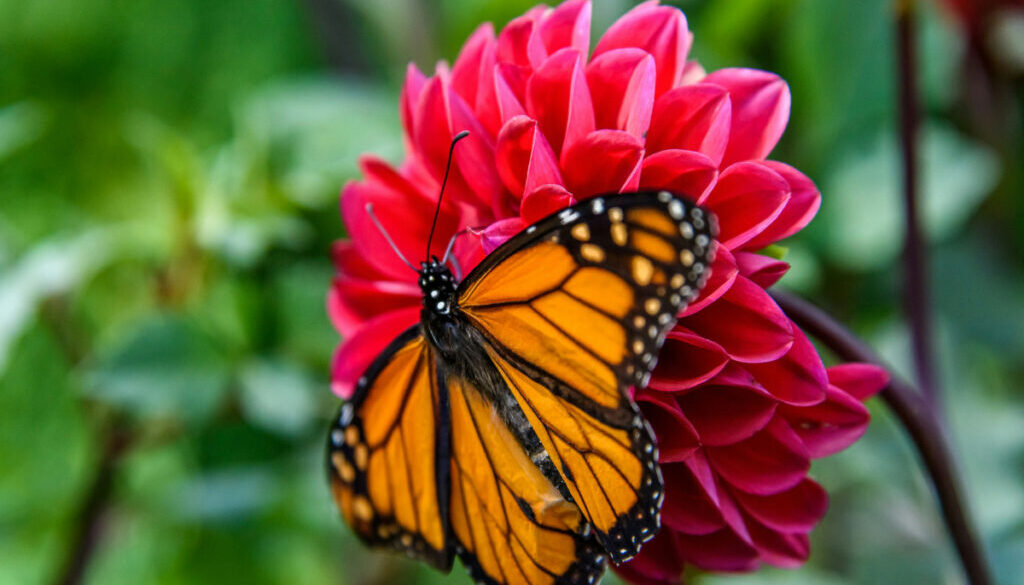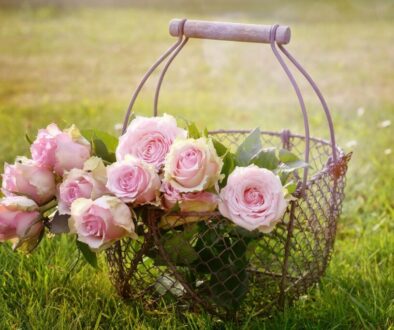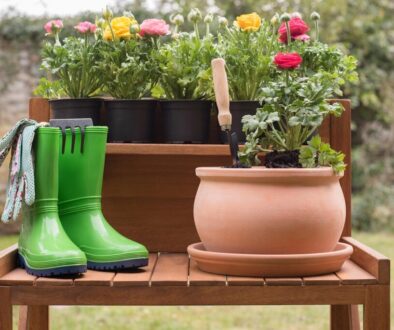How to Create a Pollinator-Friendly Garden
Pollinators such as bees and butterflies are essential in maintaining healthy ecosystems. They help plants reproduce by transferring pollen from one flower to another, ensuring the growth of fruits, vegetables, and flowers. Without pollinators, many plant species would struggle to survive, which would negatively impact both wildlife and human food production.
However, pollinator populations are declining due to habitat destruction, pesticide use, and climate change. Therefore, it is crucial for gardeners to create spaces that support these vital creatures.
A pollinator-friendly garden provides food, water, and shelter while avoiding harmful chemicals. In this article, we’ll explore the best flower seed packs to attract bees and butterflies, tools for creating shallow pollinator water sources, organic fertilizers that won’t harm pollinators, and how to choose native plants for better biodiversity.
By the end of this guide, you’ll have all the information needed to create a thriving haven for pollinators in your own backyard!
Flower Seed Packs to Attract Bees and Butterflies
Why Flower Selection Matters
Not all flowers are equally beneficial to pollinators. Some plants have been bred for aesthetics rather than nectar production, making them less useful to bees and butterflies. To attract and support pollinators, you should choose flowers rich in nectar and pollen.
Additionally, selecting a mix of flowers that bloom at different times of the year ensures a continuous food supply for pollinators. This is especially important in early spring and late fall when nectar sources are scarce.

Best Flowers for Attracting Bees
Bees are among the most important pollinators, and they prefer flowers that provide abundant nectar and pollen. Here are some of the best options:
- Sunflowers (Helianthus spp.) – These large, bright flowers are packed with nectar and pollen, attracting a variety of bee species.
- Lavender (Lavandula spp.) – The strong fragrance and purple blossoms make lavender a favorite among honeybees and bumblebees.
- Coneflowers (Echinacea spp.) – Their vibrant petals and central seed heads provide nectar for bees and seeds for birds.
- Borage (Borago officinalis) – This herb blooms repeatedly throughout the season, providing a continuous nectar source.
- Thyme (Thymus spp.) – A great ground cover that doubles as a food source for bees.
Best Flowers for Attracting Butterflies
Butterflies are drawn to bright, fragrant flowers that provide easy access to nectar. Some of the best choices include:
- Milkweed (Asclepias spp.) – Essential for monarch butterflies, as it serves as both a nectar source and a host plant for their caterpillars.
- Zinnias (Zinnia elegans) – These colorful flowers bloom all summer and attract a variety of butterfly species.
- Black-eyed Susans (Rudbeckia hirta) – Their daisy-like shape and bright yellow petals make them a butterfly magnet.
- Lantana (Lantana camara) – A drought-tolerant plant that produces nectar-rich blooms in multiple colors.
- Verbena (Verbena spp.) – Produces small, clustered flowers that butterflies find irresistible.
Where to Buy High-Quality Seed Packs
To get the best results, purchase high-quality, non-GMO, and pesticide-free seeds from reputable sources:
- Local nurseries and garden centers – These often carry native flower seeds suitable for your region.
- Online stores – Reputable options include Burpee, Eden Brothers, and Botanical Interests.
- Wildlife conservation groups – Organizations like The Xerces Society and Pollinator Partnership offer seeds specifically for pollinator gardens.
Tools for Creating Shallow Pollinator Water Sources
Importance of Water for Pollinators
While we often focus on providing food for pollinators, water is just as crucial. Bees, butterflies, and other insects need water for hydration and to regulate their body temperature.
Unlike birds, pollinators cannot drink from deep water sources. Bees can drown in birdbaths, and butterflies need a safe, shallow space to access moisture. Creating a dedicated water source ensures they have what they need to survive.
DIY Shallow Water Sources
Creating a simple water station for pollinators is easy. Here’s how you can do it:
- Use a shallow dish or plate – A plant saucer, a pie pan, or even a shallow bowl can work.
- Add pebbles or small stones – These provide safe landing spots for bees and butterflies.
- Fill with fresh water – Keep the water level low to prevent drowning.
- Place in a shaded area – This keeps the water cooler and slows evaporation.
Best Commercial Water Stations
If you prefer a ready-made option, consider these:
- Bee baths with built-in platforms – These come with floating corks or rocks for safe landing.
- Butterfly puddling dishes – These mimic natural mud puddles, providing minerals in addition to water.
- Solar-powered water fountains – A gentle flow keeps water fresh while preventing mosquito breeding.
Maintenance Tips
To keep your water source safe and effective:
- Change the water daily – This prevents mosquitoes from laying eggs.
- Clean the dish weekly – Scrub to remove algae and bacteria buildup.
- Replenish water during dry spells – Pollinators rely on these sources, especially in hot weather.
Organic Fertilizers That Won’t Harm Pollinators
Why Chemical Fertilizers Are Dangerous
Many commercial fertilizers contain synthetic chemicals that can harm or kill pollinators. These fertilizers may include pesticides, herbicides, or fungicides that disrupt pollinator health. Residues on plants can also contaminate nectar and pollen, poisoning bees and butterflies.
To create a pollinator-friendly garden, it’s important to use organic, natural fertilizers that nourish the soil without posing risks to insects.
Best Organic Fertilizers
Here are some of the safest and most effective organic fertilizers:
- Compost – Made from decomposed plant material, compost enriches the soil and promotes healthy plant growth.
- Manure – Animal manure (cow, chicken, horse) is an excellent natural fertilizer but should be composted first to prevent burning plants.
- Bone meal – A great source of phosphorus, which supports root and flower development.
- Fish emulsion – A liquid fertilizer made from fish remains, providing essential nutrients.
- Seaweed fertilizer – Contains trace minerals that enhance plant health.
How to Apply Organic Fertilizers Safely
- Use compost tea for a gentle boost – This liquid fertilizer nourishes plants without harming pollinators.
- Avoid over-fertilizing – Too much fertilizer can lead to excessive foliage growth, reducing flower production.
- Apply in the early morning or evening – This minimizes the risk of disrupting pollinators during their active feeding times.
Choosing Native Plants for Better Biodiversity
Benefits of Native Plants for Pollinators
Native plants have evolved alongside local pollinators, making them the best choice for supporting biodiversity. They:
- Provide high-quality nectar and pollen.
- Require less maintenance, as they are adapted to local conditions.
- Support native wildlife, including birds and beneficial insects.
- Improve soil health and reduce the need for fertilizers.
Best Native Plants by Region
- Eastern U.S.: Goldenrod, Joe-Pye weed, Wild bergamot.
- Midwest: Purple coneflower, Prairie blazing star, Butterfly weed.
- Western U.S.: California poppy, Yarrow, Sage.
- Southern U.S.: Coral honeysuckle, Passionflower, Firebush.
How to Plant and Care for Native Species
- Plant a variety of species – Ensures food sources throughout the year.
- Use mulch to retain moisture – Reduces the need for frequent watering.
- Avoid pesticides – Many chemicals harm pollinators, even organic ones.
Why Native Plants Are the Best Choice
Native plants are species that naturally grow in a specific region without human intervention. These plants have adapted to local soil, climate, and wildlife, making them the best option for supporting pollinators.
Unlike non-native plants, which may require more water, fertilizers, and pesticides to thrive, native plants flourish with minimal maintenance. They also support a wider range of native bees, butterflies, and birds.
Best Native Plants by Region
If you want to plant native flowers but aren’t sure which ones to choose, consider these options based on your location:
- Northeast U.S.
- Goldenrod (Solidago spp.) – A late-season bloomer that provides nectar in the fall.
- Joe-Pye Weed (Eutrochium purpureum) – Tall pink flowers that attract butterflies and bees.
- Wild Bergamot (Monarda fistulosa) – A fragrant plant loved by hummingbirds and bumblebees.
- Midwest U.S.
- Purple Coneflower (Echinacea purpurea) – A favorite of both bees and butterflies.
- Prairie Blazing Star (Liatris pycnostachya) – Provides abundant nectar for monarchs.
- Butterfly Weed (Asclepias tuberosa) – A milkweed species essential for monarch caterpillars.
- Western U.S.
- California Poppy (Eschscholzia californica) – A drought-resistant flower rich in nectar.
- Yarrow (Achillea millefolium) – Thrives in dry climates and attracts diverse pollinators.
- Sage (Salvia spp.) – Produces vibrant blue or purple blooms that hummingbirds love.
- Southern U.S.
- Coral Honeysuckle (Lonicera sempervirens) – A climbing vine that attracts hummingbirds.
- Passionflower (Passiflora incarnata) – A host plant for Gulf fritillary butterflies.
- Firebush (Hamelia patens) – Provides nectar for butterflies and hummingbirds.
How to Plant and Care for Native Species
Once you’ve selected native plants, follow these tips to ensure they thrive in your garden:
- Plant in groups – Pollinators prefer large patches of the same plant rather than scattered individual plants.
- Choose a variety of bloom times – Ensures nectar is available from spring to fall.
- Avoid pesticides – Even organic pesticides can be harmful to beneficial insects.
- Provide shelter – Tall grasses, shrubs, and dead wood create safe spaces for pollinators.
- Mulch appropriately – Use natural mulch like leaves or bark to retain soil moisture without suffocating the plants.
Additional Tips for a Pollinator-Friendly Garden
1. Avoid Pesticides and Herbicides
One of the biggest threats to pollinators is the use of pesticides, herbicides, and insecticides. Even products labeled “safe” for gardens can be harmful to bees and butterflies.
Safer Alternatives to Chemical Pesticides
- Neem oil – A natural pesticide that helps control pests without harming pollinators when applied in the evening.
- Diatomaceous earth – Works against harmful insects but should be used sparingly.
- Beneficial insects – Ladybugs, lacewings, and praying mantises help control garden pests.
If you must use a pesticide, apply it early in the morning or late in the evening when pollinators are less active.
2. Create a Butterfly Resting and Feeding Area
Butterflies need more than just flowers—they also require sunny spots for basking and resting.
How to Make a Butterfly Resting Spot
- Flat stones or logs – Butterflies rest on warm surfaces to regulate their body temperature.
- Sheltered areas – Small shrubs or tall plants provide protection from wind.
- Puddling stations – A shallow dish filled with sand and water provides essential minerals.
Adding a butterfly house can also help certain species find shelter during storms or cool nights.
3. Add Bee Hotels for Solitary Bees
Not all bees live in hives—many species, like mason bees and leafcutter bees, are solitary. These pollinators need safe nesting spaces, which you can provide with a bee hotel.
How to Build a Bee Hotel
- Use a wooden box or block – Drill holes about 4–8 mm wide and 3–6 inches deep.
- Fill with bamboo tubes or rolled paper – These provide nesting tunnels for bees.
- Mount in a sunny location – Ensure it’s protected from strong winds and rain.
Bee hotels help boost local bee populations and increase pollination in your garden.

Conclusion
Creating a pollinator-friendly garden is one of the best ways to support biodiversity and protect declining pollinator populations. By choosing the right flower seed packs, providing safe water sources, using organic fertilizers, and planting native species, you can transform your garden into a haven for bees, butterflies, and other beneficial insects.
Start small—add a few pollinator-friendly flowers, set up a water station, and gradually expand your efforts. Even a small garden or balcony space can make a difference.
By taking these simple steps, you’ll not only enjoy a more vibrant, colorful garden but also contribute to the survival of essential pollinators for generations to come.
Happy Gardening!








